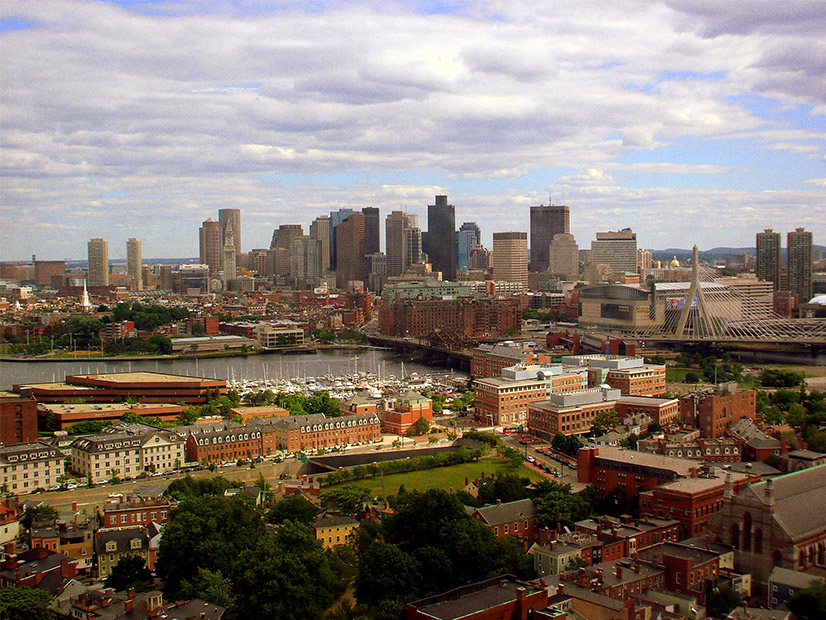Boston’s plan to establish an enforceable emissions performance standard for its large buildings is entering its final phase.
Alison Brizius, director of climate and environmental planning at the Boston Environment Department, says her office hopes to have a “concrete timeline” for a City Council vote on the standard “soon.”
“We’re in a mayoral transition, and we’re briefing the new [acting] mayor now,” Brizius told attendees at the Northeast Sustainable Energy Association’s BuildingEnergy Boston conference Thursday. Former Mayor Marty Walsh resigned in March to serve as U.S. secretary of labor, making City Council President Kim Janey the acting mayor until at least the end of the year.
Boston released its draft of the emissions standard in January after a yearlong development process based on strategies identified in its 2019 Climate Action Plan. As part of that plan, the city set a goal of amending its existing building energy reporting and disclosure ordinance by adding an emissions standard.
Seventy percent of the city’s greenhouse gas emissions come from buildings, and 50% come from the large commercial and residential building sector.
The standard “sets performance targets instead of any prescriptive technology pathways to allow flexibility that we believe is needed for building owners in how they choose to meet their targets over time,” Brizius said.
As proposed, the standard would change the size requirement for buildings covered, reducing the existing cutoff of 35,000 square feet to 20,000 square feet. Covered buildings would be subject to daily fines for not meeting emissions standards, which would be measured in metric tons of carbon dioxide equivalent (CO2e) per square foot, vary by building type and gradually reduce every five years until they reach zero in 2050.
Buildings that are already covered by the existing ordinance would have to comply by 2025, and newly covered building compliance would start in 2030.
There is room, however, for building owners to adjust their compliance timelines. Owners that find it challenging to reach the initial annual emissions targets can apply for an individual compliance schedule.
“They can bring those individual pathways to a review board and get them approved so that there is flexibility for situations that we can’t account for,” Brizius said.
In addition, building owners can seek approval for a hardship compliance plan. Brizius said such plans might be necessary for, as examples, affordable housing developments with unique financing timelines or buildings with energy supply contracts.
Building owners will have the option to comply with the standard through energy efficiency measures, fuel switching and renewable energy purchases. If they miss their emissions targets, the standard offers the option of an alternative compliance payment.
The proposed payment is $234/metric ton of CO2e, which Brizius said is designed to ensure it does not disincentivize on-site efficiency and renewable energy work.
“This is a dollar value that we propose to re-evaluate periodically,” she said. “If there are major changes in the price of [emissions] abatement, that dollar value can likely come down and may go up; we’ll see as time progresses.”
Alternative compliance payments would go into a fund for investing in building decarbonization. Brizius said the funding would prioritize projects that “support training and access to green jobs for residents, women and people of color and [that] build up economic inclusion opportunities and clean energy deployment.”
Financial support will be critical to the success of the standard, according to Brizius.
“We’ve already created a tax-exempt lease product for nonprofits in the space; we’ve authorized commercial space for Boston; and we’re exploring what new funding and financing mechanisms, [such as a Boston Climate Bank], will be needed to further close the gap and support deeper retrofit projects that will be needed down the line,” she said.




